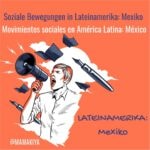Event Title: The Shining Path in the Andes and the Peruvian Rainforest (Social Movements in Latin America: Peru)
Datum: 10.12.2021
Number of participants: 30
On December 10, we organized an international online seminar on the communist party and guerrilla organization Sendero Luminoso ("Shining Path"). It was the first part of the contract series "social movements in Latin America". The event took place in Spanish and was simultaneously translated into German.
Pier Marzo Rodríguez: The History of Sendero Luminoso (Shining Path)
The seminar started with a short welcome and introduction of the speakers. Afterwards, Pier Marzo Rodríguez, ombudsman in Huánuco, presented historical facts about Shining Path. The focus was on the period from 1980 to 2000, during which time the guerrilla organization was one of the main actors in political violence in Peru. Marzo Rodríguez reported numbers of dead and missing persons peaked during this period. In the province of Tochache, there were 491 people, and in Leoncio Prado, as many as 1420. In addition, the speaker presented a chronology of murders and destruction of buildings. The goal of the "anti-democratic movement" had been to create a power vacuum by assassinating politicians in order to eventually come to power themselves. On the other hand, the military's response had also been violent, escalating the situation. The presentation ended with the recital of the poem Mirar Lejos ("Looking into the Distance") by César Vallejo. It is about an ideal world in which the impossible becomes possible.
Discussion round of the speakers
The seminar continued with a panel discussion among the speakers. Julio Medívil, professor of ethnomusicology in Vienna, criticized the presentation. He said that the historical context of the facts presented is difficult to grasp without background knowledge. Jose Miranda Valladares, (Board of Directors of Rimanakuy) also commented on the presentation. According to him, the Shining Path in Peru had the objective to fight against the prevailing social injustice. The reason for this was the lack of response from politicians. During the talk, Medívil emphasized that Peru has a very diverse history that should not be told in a one-sided way. He described the example that the government of the time had a choice: it could choose a democratic path or a military path in combating the Shining Path. He said that one should not make a blanket statement that Peru's current political left is undemocratic, but should differentiate between democratic and undemocratic parties. Moreover, the Shining Path was not the only communist party in Peru, but one of many. The state criminalized the organization by labeling it a terrorist organization. Only in this way did it acquire political relevance. Ultimately, the violence escalated, according to Medívil.
Opinions on the plot of the Shining Path
Afterwards, seminar leader Amanda Luna asked the speakers about their feelings about the Shining Path action. They mentioned shivers and shock, anger, sadness, disappointment and disorientation. Another question was about the significance of the death of Abimael Guzmán, the leader of the organization at the time. The speakers agreed that the death had no personal significance for them. Instead, they said, the death of a key figure on the left had political significance: right-wing parties lost parts of their basis for argumentation. The speakers then broke into breakout sessions with the seminar participants. Here they talked about the influence of the Shining Path on today's politics in Peru.
The closing debate
The seminar ended with a lively discussion. In it, Jose Miranda Valladares emphasized that there are different perspectives on the issue. Everyone agreed, more or less, that it was a strategic mistake on the part of the government to answer violence with violence. This was because the response to the violence emanating from the Shining Path had not been democratic. Thus, the Peruvian state had used the same means as the organization itself. The question also arose whether the military had made a mistake by acting so violently against many citizens and the Shining Path. Julio Medívil described the actions not only as a mistake but as a crime. The further discussion was about the reappraisal of the past and the view of younger generations. In this context, seminar participant Saron Cabero (from Bolivia, living in Germany) addressed the traumatic past present in many Latin American countries. Cabero posed the question of how issues can be communicated to new generations without passing on history based on hatred. According to her, it is important that the past is not forgotten, but respected, but without hatred and rejection. Pier Marzo Rodríguez replied that it is important to look at the past on the basis of historical facts. To him, it is important that victims of the past receive justice and compensation. He also stressed that while we can learn from history, it is also important to look forward. Today, other people are in government and the Shining Path no longer exists. Therefore, Marzo Rodríguez said, it is important to look at the current situation. In this way, one can better understand which developments can create justice.
Summary
Overall, many different perspectives came together in the seminar. The speakers succeeded in illuminating a part of Peru's history from different sides. There were diverse opinions from the speakers and participants on the influence of history on the present. This shows that the action of the Shining Path and the reaction of the government are still controversial today.
Author: Nicolò Brugnone




